Finding a floral rainbow
Wildflowers by Paul Hobson
An annual plant of arable fields, cultivated and disturbed ground, the poppy, Papaver rhoeas creates striking displays in crops, waysides and gardens in early June. They also frequent pavements and kerbsides in towns and despite producing no nectar, poppies are popular with bees even when there are nectar producing flowers nearby. It is thought that the poppy’s popularity is due to its pollen containing essential amino acids.
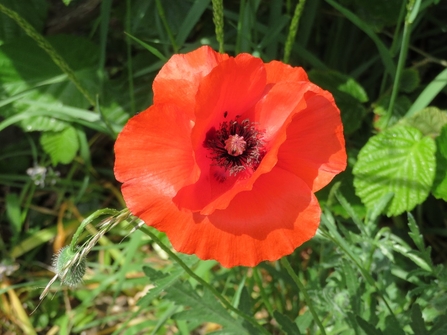
Poppy, Papaver rhoeas - Susan Stone
Orange – Fox and Cubs, Pilosella aurantica
Originally introduced from continental Europe, Fox and Cubs, Pilosella aurantica is an attractive plant that has readily jumped the garden fence and naturalised into grasslands near habitation. Its ability colonise our countrysides, however, hasn’t had any known ill effects and is much beloved by insects, especially bees, producing both nectar and pollen. With flower heads similar to dandelions, Fox and Cubs have another colloquial name, devil’s paintbrushes.
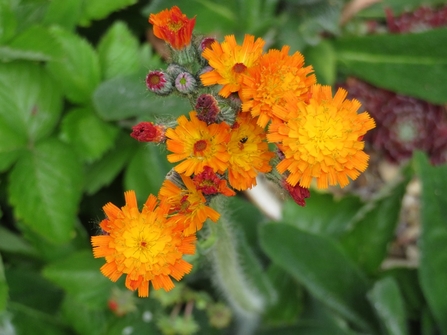
Fox and Cubs, Pilosella aurantica - Susan Stone
Yellow – Bird’s foot trefoil, Lotus corniculatus
Providing both yellow and orange for a floral rainbow search, bird’s foot trefoil, Lotus corniculatus, is in the pea or legume family and can be commonly found in grass verges and wildflower patches and is the larval food-plant for the common blue butterfly. This plant also has a few interesting nick names including 'eggs and bacon' due to its variation in colour and apparent similarity to its food based namesake, and 'granny’s toenails' - when this plant goes to seed, the seed head is said to resemble something like your grandma’s uncut nails!
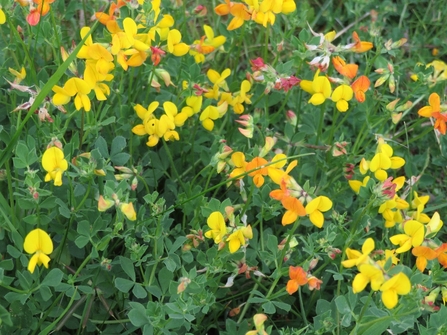
Bird’s foot trefoil, Lotus corniculatus - Susan Stone
Green - Scrubby margins
In early June, there's a sea of green, with everything in full leaf. The picture below features a verdant, scrubby corner which provides ideal nesting opportunities and is graded as 'edge habitat'. The welcome rain we have had in recent days has refreshed the myriad shades of green and you can almost hear the wildlife sigh with relief.
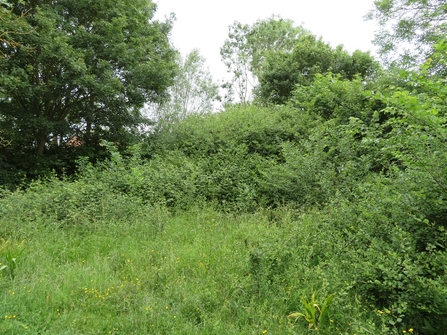
Martins Meadow - Susan Stone
Blue – Germander Speedwell, Veronica chamaedrys
There are not many blue flowers in our countryside but the speedwell family produce the most wonderful sapphire blue flowers. This is Germander Speedwell,Veronica chamaedrys, and it is found in many grasslands, gardens, roadsides and along grassy lanes and it is thought to be a good luck charm for travellers as it “speeds people on their way”.
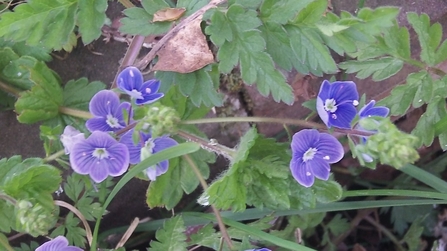
Germander Speedwell, Veronica chamaedrys - Susan Stone
Indigo - Knapweed, Centaurea nigra
Knapweed, Centaurea nigra, is coming into flower in our countryside at the moment and includes both indigo and violet within the same flower, but indigo is perhaps dominant.
Knapweed is popular with pollinator species and can be alive with bees and butterflies on a sunny day, and its seedheads are beloved by goldfinches during the autumn and winter months. In days past, knapweed was used for ruptures and wounds, bruises and sores and sore throats.
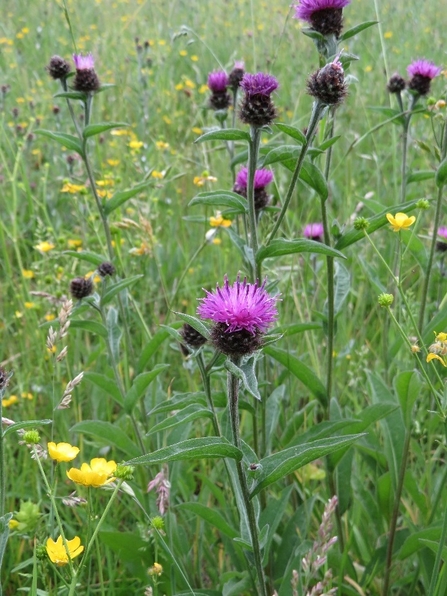
Violet - Knapweed, Centaurea nigra - Susan Stone
Violet - Common Mallow - Malva sylvestris
Common Mallow, Malva sylvestris, is a classic wayside plant of well drained fertile soils.
It is a great favourite of insects and provides pollinators with nectar throughout the summer. Here it is growing on a roadside verge at in the company of other wayside flowers such as poppy and white campion. The French word for mallow us “mauve” which is where we get the word for the colour mauve from.
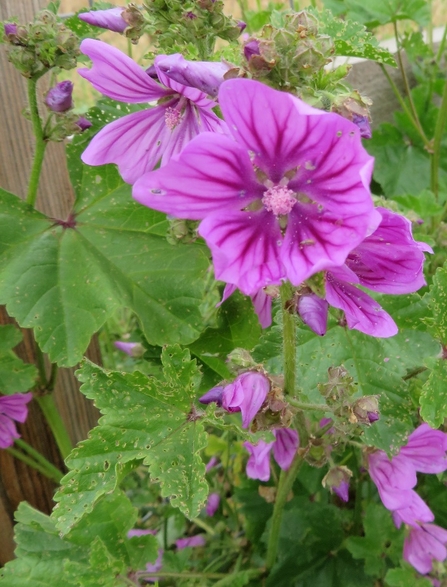
Common Mallow - Malva sylvestris - Susan Stone
Why not try and find the different colours of the rainbow yourself – we’d love to see what species you find!
